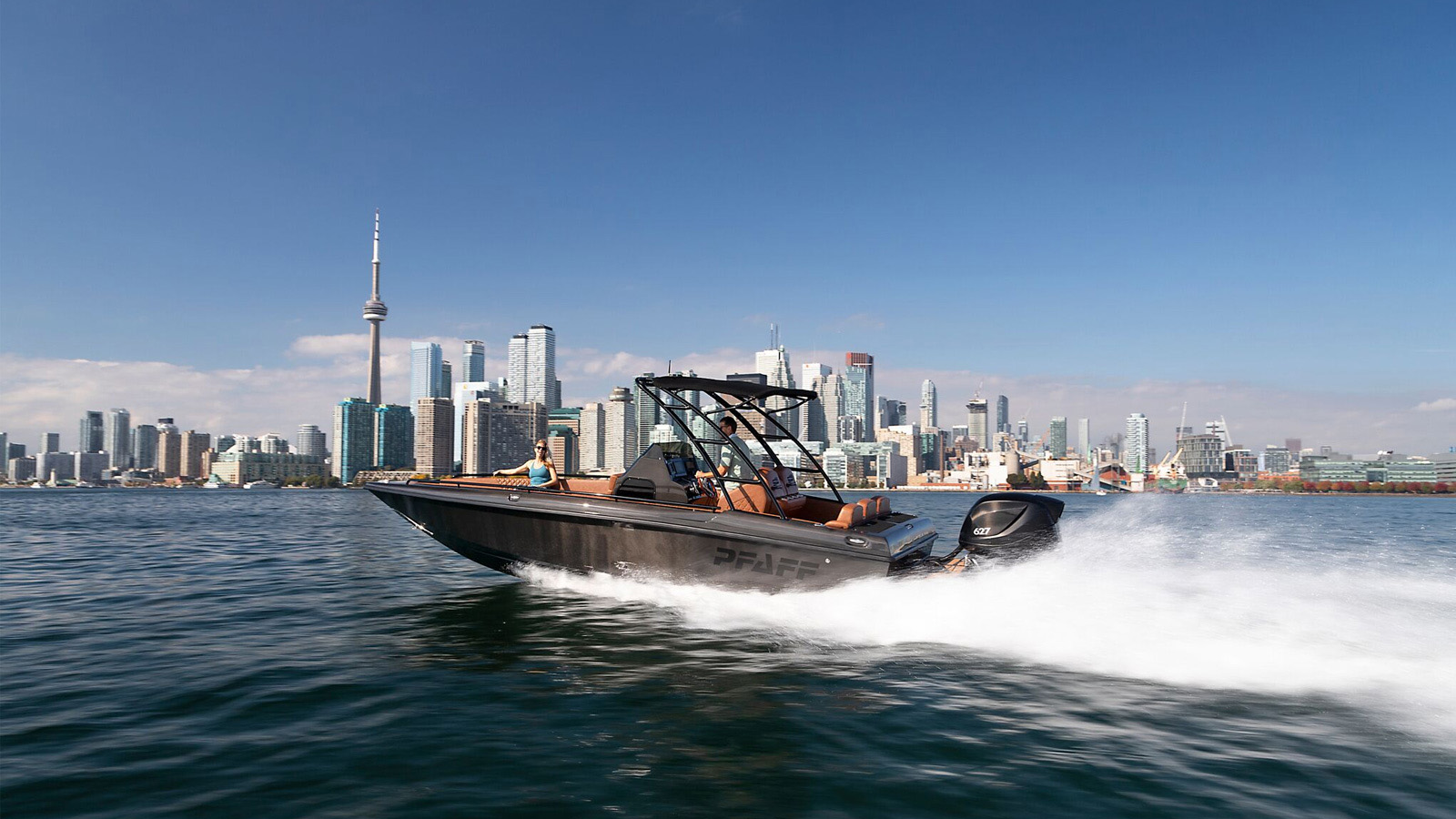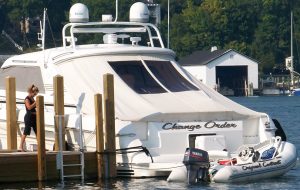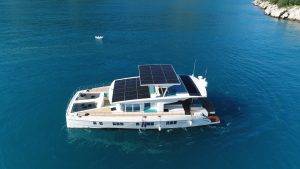
When is a Trend a Trend?
Published on November 12, 2020The question of when a trend becomes a trend all depends on who you ask and at what point you ask. In my humble experience, there is no one answer or necessarily correct answer.
For example, back around February, March and April boat manufacturing and sales pretty much world-wide were hit hard by the pandemic. Manufacturing plants were shutting down, dealer sales falling, people were being furloughed, marinas were shut down, businesses were struggling to pay their bills and stay afloat, and the forecasts were doom and gloom. For those who could, people were working from home (and many still are). Public gatherings were being shut down as were schools. Many businesses were shut down with some not having the ability to recover. Marine businesses, along with almost every other industry, were clamoring that they were essential and seeking financial assistance, or at least an easing of the restrictions. Then governments started stepping up to the plate and figuring out ways to help and to move forward – and marinas were mostly deemed essential and boating an activity that fits well into safe socially distanced recreation.
So by summer boating was taking off like gangbusters as a life ring for those looking to get out, have fun and do something that they enjoyed – primarily with family as social distancing has become the new normal.
Making Predictions
So, in this case, the trend this past spring was quite different from the trend this summer, and predictions of what might happen this winter really depend on whose crystal ball one is looking into. Will there be new spikes or lockdowns, or will there be a continuation of the current more or less status quo? Assuming unemployment remains fairly high, one might want to keep an eye on repossession rates as just one indicator of where things are heading in the next six to 12 months.

From the fly deck it is my opinion one ultimately needs to take a longer view over time to see what the more fundamental trends have been and are today. The past is relatively easy to analyze with 20/20 hindsight vision. The trend has been moving away from all wooden boats towards aluminum, steel, fiberglass, and composites, with newer carbon fiber and similar materials entering the arena. Boats have more finishing accoutrements than ever before, and the electronics and wiring associated with boats today can easily be more involved than many residences.
Over time boating has become more performance driven. In many ways it is following the auto industry with accessories and performance designs. Boating has become much more expensive from the entry level on up. At the same time the average age of boaters keeps trending higher, with sharp declines in the younger generations coming into boating.
Pricing Trends
So what do the trend curves suggest is in the future? There is no question that boats are still getting longer and wider and are being provided with more and more creature comforts. I would suspect that the trend will continue – but it is also increasing the price and complexity. Unlike the automobile industry, there are relatively few entry level priced boat models. The increased complexity can also prove a bit daunting, both in terms of figuring it all out and the cost in time and money to keep it all working. Many believe that the total cost and complexity of boating are contributing reasons for the younger generations either not getting into boating at all, or at least not until reaching much older ages when they feel they can afford the luxury and, perhaps, have more time. This has already been seen and if it continues it can have an adverse effect on the industry.

On the other hand, there clearly is demand for more creature comforts, higher performance, and high-powered electronics. That all comes with a price and is similar to the auto industry, which is why the higher priced models so often do sell well. But there are differences between what we more common folk may pay for fancy autos, which many rationalize are a necessity, and boats, which many of the same people consider a luxury. How much is too much?
That said, better materials have a good chance of taking a larger share of the market. Carbon fiber is lighter and stronger than many other materials. It allows for better performance with less weight but it comes at a price, whether we’re talking about the roughly $350,000 Carbon Marine Super Sport 28 with a top speed of 80 mph, or the somewhat slower Slipstream Watercraft SportDuo 13 canoe for roughly $2,000. That canoe by the way, weighs all of 21 pounds, while the Super Sport comes in around 4,500 pounds, allowing it to cruise at 45 mph at two mpg. That mpg might sound pretty horrible to a Prius owner, but it is actually quite an accomplishment for such a high performance boat! In both of these examples the hulls are using carbon fiber/Kevlar hybrids, which definitely look like the trend. As with most all new materials, the more widely they’re used, the more likely the costs will come down, thereby further promoting their use.
Environmental Trends
And more extensive use of these and similar weight-saving materials are all but inevitable necessities as the industry starts to more seriously look at ways to make all aspects of boating greener and cleaner, including improving fuel efficiencies and introducing more hybrid and electric boating options. While the boating world has been lagging the auto world on the latter fronts, the number of options in recent years is really starting to grow, and it may be safe to say that this emerging trend is safely on a more solid trend track. A few interesting options on this front might include New Zealand’s EVO33 from Evocean, which is working with Finland’s Oceanvolt for the electric or hybrid engine options (and if you visit the Oceanvolt site you will find a growing list of other boats making use of their systems), or the Serenity 64 from Serenity Yachts in the Cayman Islands, which can cruise extensively just with the power from its solar panels – no plug-in required.
Both the EVO33 and Serenity 64 are non-sail catamarans, which highlights yet another further emerging trend, as more and more catamarans and trimarans seem to be appearing in manufacturers’ new power and sail lines. These of course become more of a challenge fitting into existing slip layouts and their numbers probably would be even greater if would-be owners felt there were more places to easily dock their boats. On this front, we are seeing more marinas looking to find room for these boats, and once they do, if they haven’t already, they often start reconsidering how they charge for slip space. Lineal foot pricing just keeps making less and less sense, as does unmetered electricity as more boats are looking to plug-in, and with much greater needs than in the past. Similar issues involve unmetered water.
Facility Trends
As for marinas, there will be a continuing trend toward consolidation based upon size and market conditions. At the same time independent facilities have a role to play and will continue to have a market. In developed countries, the industry continues to wrestle with significant deferred maintenance. With the demand for waterfront residential and mixed used developments, many of these facilities will disappear or be reincarnated into reimagined and many times different types of facilities.
At the same time the regulatory process will continue to become more and more convoluted, rigorous, time consuming, and expensive. In part this is why deferred maintenance is so high in developed countries. Nevertheless, renovating and reconfiguring existing facilities will continue to be the norm since new marinas in developed countries will be few and far between.
Similar to deferred maintenance, another unfortunate trend we have seen is more marinas taking shortcuts in building, retrofitting and enhancing their facilities. Many do it due to budgetary considerations, and while I can relate to that, it will typically result in substantially more costly fixes at a later date. For example, a facility suffered hurricane damage to the top half of their seawall.
They opted to simply rebuild the top of the wall. But the real cause of the failure was that the seawall did not have a proper footing, so the wall had been shifting and bulging and the hurricane accelerated the failure. By not addressing the real cause the problem will likely recur within a few years and the overall cost will be substantially higher.
There is an expression, “Either do it right or don’t do it at all.” A trend I would love to see is for more of the industry to rethink its pricing policies and charge what is needed to do it right and provide the facility that is desired. We find that customers are willing to pay what is needed to support a facility if the customers perceive that they are getting value for their money. Marinas are capital intensive but do not communicate well what is being undertaken to improve the facility for their customers. Hopefully the trend will change to charge what is needed to continue to improve the facilities and provide the desired level of service to the market they wish to serve.
Specialty Trends
And there is a trend towards more specialty facilities – such as for deep sea fishing boats, racing sailboats, and megayacht facilities – all sized for the market in their respective areas. Marinas will also be using newer technology and materials as well as more sophisticated software management systems. On the latter front, one that’s particularly caught my eye is Molo, Inc. – their system is impressive, and their customer support even more so.
Rack storage will continue to increase, particularly where in-water area is scarce or upland too expensive not to max out its use. Rack storage continues moving towards handling larger and heavier boats as well as serving greater numbers of the smaller low profile fishing, runabout, and ski boats.
Speaking of ski boats, time to put my crystal ball away and go hit the water one more time before calling the 2020 season a wrap!
Dan Natchez is president of DANIEL S. NATCHEZ and ASSOCIATES Inc., a leading international environmental waterfront design consulting company specializing in the design of marinas and marina resorts throughout the world. He invites your comments and inquiries by phone at 914/698-5678, by fax at 914/698-7321, by e-mail at dan.n@dsnainc.com or on the Web at www.dsnainc.com.
| Categories | |
| Tags |






